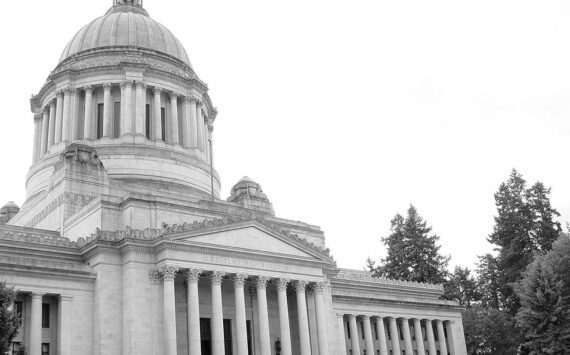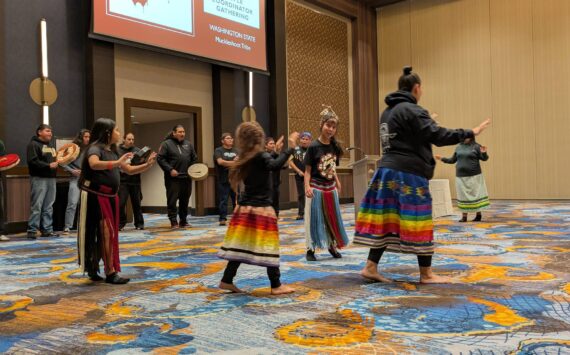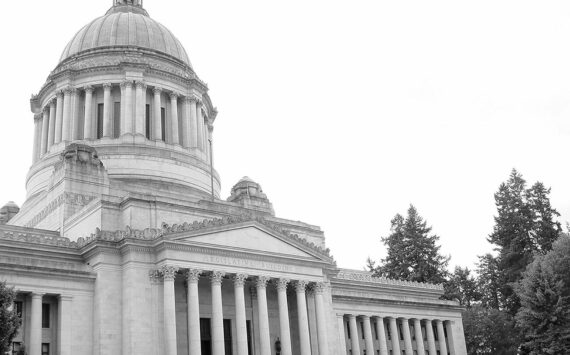Conservation easement will assure public recreation access while protecting a working forest from development
The Trust for Public Land, Green Diamond Resource Company and Washington State Department of Natural Resources (DNR) announced they have permanently protected 7,391 acres of working forest land in Mason County at the southwestern end of Puget Sound.
The land, located on the Olympic Peninsula between Hood Canal and Case Inlet, will remain in active timber production while protecting water quality and wildlife habitat. It will also be available to the public for hiking, mountain biking and other outdoor recreation. The 7,391 acres protected today is the second phase of a three-phase effort to protect over 20,000 acres of this coastal forest from development in the Puget Sound region. In 2016, 6,967 acres – the project’s first phase – were protected, and earlier this year, Congress appropriated $5.1 million in the 2018 budget to protect the project’s third and final phase. With two metropolitan areas only a half hour away and with high demand for affordable home sites, the land was highly vulnerable to subdivision and development.
“Protecting these productive forestlands from future development safeguards local jobs, keeps vital habitat intact for wildlife and protects the quality of Puget Sound while providing public access for outdoor recreation,” said David Patton, Northwest Area Director for The Trust for Public Land. “This project advances multiple benefits for everyone involved.”
The land is owned by Green Diamond Resource Company, a Washington-based privately held forest products company. Green Diamond will continue to manage it under a conservation easement that guarantees the land will never be developed and will always be open for public recreation. Green Diamond’s lands in Washington state are managed under a Habitat Conservation Plan to protect 51 aquatic and terrestrial species while allowing for forest management.


“Working forests are a major part of Mason County’s economy, and this transaction will help to ensure a healthy forest products industry here for many years to come,” said Blayde Fry, Vice President and General Manager at Green Diamond Resource Company.
The conservation easement was appraised and purchased for $6.634 million. Funding for the purchase came entirely from the USDA Forest Service Forest Legacy Program, which is specifically designed to protect environmentally sensitive forestlands that are threatened by conversion to non-forest uses. The easement will be held by DNR, which will be responsible for long-term monitoring and enforcement of its restrictions.
The FLP funding comes from the Land and Water Conservation Fund (LWCF), the federal government’s main source of funds to protect land. LWCF, which was created by Congress in 1964, is funded not through taxes, but through royalties paid by energy companies for offshore gas and oil drilling.
“The working forestland protected by this easement will provide public recreation, environmental and economic benefits for generations to come,” said Commissioner of Public Lands Hillary Franz, who leads DNR. “This is a huge win for Mason County.”
“This conservation is another major step toward protecting essential forest lands in Mason County that support vital local wildlife, recreation, and economic growth. Washingtonians across the board depend on our natural resources, and I’ll keep fighting to strengthen investments in critical environmental programs like the Land and Water Conservation Fund that supports programs to help protect these forests for future generations of families, entrepreneurs, and outdoor enthusiasts across Mason County and Washington state,” said U.S. Senator Patty Murray (D-WA).
“The Land and Water Conservation Fund is critical to protecting public lands, working forests, clean air, and clean water throughout our country. The successful and widely supported South Puget Sound Coastal Forest project is a perfect example of why I am fighting to reauthorize the LWCF,” said U.S. Senator Maria Cantwell (D-WA), the top Democrat on the Senate Energy and Natural Resources Committee.
“The Land and Water Conservation Fund protects our land and literally grows jobs,” said U.S. Representative Derek Kilmer (WA-06). “This project will protect thousands of acres of working forestland in Mason County that will help attract more visitors to our region and improve water quality in Hood Canal which is critical for our shellfish growers. I’ll keep pushing to permanently reauthorize the LWCF so that it continues creating more opportunities in our neck of the woods.”
Healthy, productive waters for salmon and shellfish are important for the Squaxin Island Tribe’s way of life.
“This will help protect water quality to sustain the long term treaty resources for future generations,” said Arnold Cooper, Chairman of the Squaxin Island Tribe.
The project will also benefit the local shellfish industry. Mason County has one of the most productive shellfish growing areas in the nation. Shellfish harvesting is the County’s second largest industry. Incompatible development could threaten local water quality, which is essential to the industry’s survival. Securing a conservation easement on the property helps protect downstream water quality for shellfish on 1,400 acres of tidelands for more than 20 shellfish companies and 2,000 recreational and tribal harvesters.
“This conservation easement is a critical step in helping to protect the water quality in the nearby inlets,” said Bill Taylor, President of Taylor Shellfish. “The easement will help to ensure that these inlets will continue to produce shellfish for tribal harvesters, recreational harvesters and shellfish farmers. The easement will not only benefit the environment in the long term but also the local economy,” he concluded.
About the partners: The Trust for Public Land’s mission is to create parks and protect land for people, ensuring healthy, livable communities for generations to come. Millions of people live within a ten-minute walk of a Trust for Public Land park, garden, or natural area, and millions more visit these sites every year. To learn more, visit www.tpl.org.
– The Trust for Public Land







